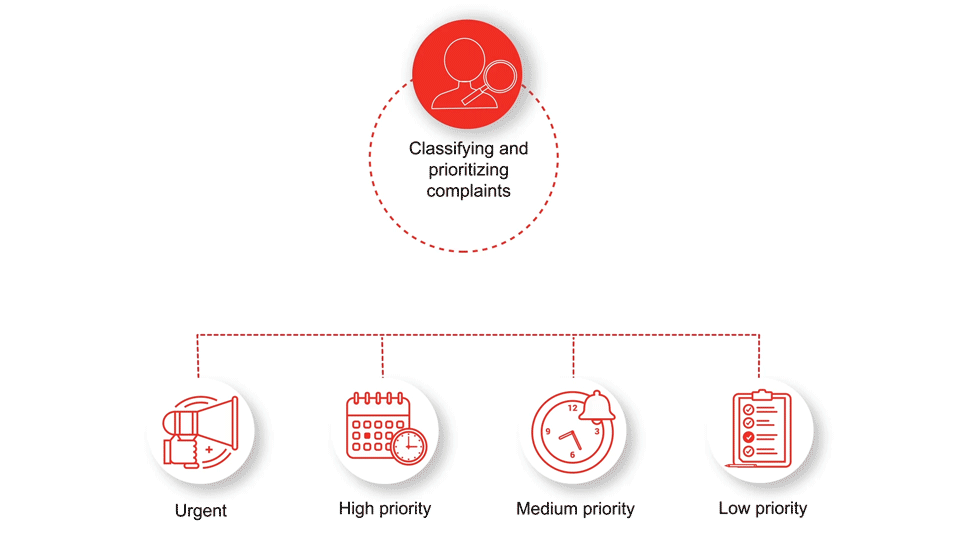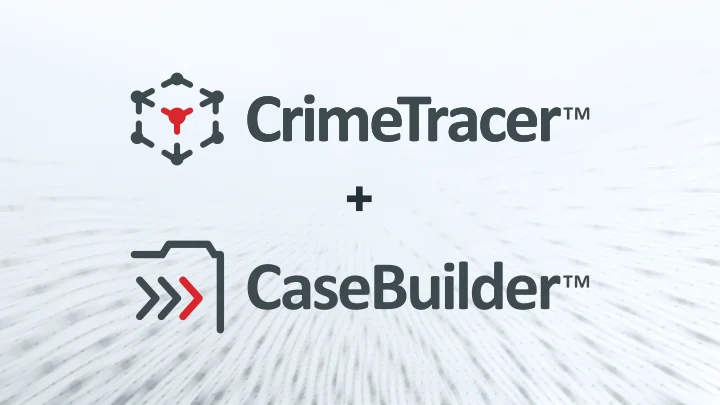Lacking a system to properly triage cases, investigators can be left scrambling to prioritize both time and resources. We have previously discussed the critical need for a dedicated case management tool that supplements records management systems (RMS) and supports investigations. In this blog, we will explore CaseBuilder™ as a resource that enables investigators to efficiently triage, assign, and manage an internal investigation while meeting stringent government compliance standards.
Responsibilities of Correctional Investigators
Internal investigators are charged with fielding a large volume of cases, from inmate complaints to use of force incidents. Because not every incident necessarily represents a crime or wrongdoing, a key to success in this role is the ability to separate valid cases from those lacking legitimacy. Sometimes, for example, an investigator may be tasked with following up on an inmate complaint as trivial as being served too small a portion of mashed potatoes in the cafeteria. Meanwhile, another inmate’s complaint may seem trivial but could actually be very serious. It’s critical that correctional investigators sort through the trivial complaints from the more important ones, but this can be tricky when case volume is high and a department lacks enough resources.
Complicating matters further, it is important to note that even trivial complaints and incidents, when occurring on a larger scale, can sometimes point to broader incidences of organized crime. While a smuggled cell phone is easy to write off as an inmate breaking the rules, a high number of cell phones discovered in a concentrated cell block over time could point to some larger operations at work. Left undetected, these crime rings harness the ability to harm not only inmates but officers and correctional investigators working in correctional facilities.
Given the sheer volume of incidents to get through and a historically limited number of options around how to manage workload, many correctional investigators fall back on outdated systems such as paper records. In addition to hurting morale, investigators are potentially duplicating work efforts and spending their time ineffectively, with little recourse by supervisors who are unable to easily track their caseloads, closure rates, or progress.

Workload and prioritization challenges
Now that we’ve discussed the types of typical tasks and challenges that a correctional investigator may encounter while conducting an internal investigation, let’s review why a dedicated case management software solution such as CaseBuilder can serve as a force multiplier, driving investigative efficiencies and positive case outcomes.
Project Management and Link Analysis
The day-to-day responsibilities of correctional investigators include a fair amount of project management. This includes assigning cases to investigators, tracking complex case details, utilizing to-do lists, and uploading video evidence. Collaboration is also critical, not only between investigators but also with supervisors tasked with monitoring caseloads, investigative progress, and closure rates. The same can also be said for external stakeholders, including external monitoring and review boards whose input is critical to overseeing adherence to regulations and professional standards.
Analytical tools are equally vital to conducting modern investigations. To effectively collaborate on complex case details, investigators require analytical capabilities such as cross-referencing, tracking, and tagging of data. They also require systems capable of visualizing linkages, detecting relationships between people, places, and evidence, and storing all of that data in a single comprehensive case folder.
As a relevant example, consider an incident of discovered contraband, perhaps a cell phone, or a small number of illicit drugs. Viewed as an isolated incident, it would be difficult to assess how it arrived at the facility, when it passed to the inmate, and how to prevent such instances in the future. Now consider a case management system such as CaseBuilder, where incidents of contraband can be viewed together with other data, including video clips, information from witnesses, and even the timing of guard patrols. To make the most hidden patterns visible and solve complex (and often connected cases), you need a sophisticated case management system equipped with highly advanced data analytics.
With CaseBuilder, it’s easy to assign and delegate tasks to members of an investigative team. Consider the above example of discovered contraband. Upon launching the investigation, an intake process would occur to formally record the incident and assign it to an investigator. From there, the case would be assigned to an internal investigator to track the case and compile to-do lists, action items, and the ability to assign tasks and collaborate with colleagues. At the same time, a supervisor would have full access to each investigator’s caseload, while also tracking institutional progress and assessing operational efficiencies.
Regulatory Compliance
In highly-regulated correctional institutions, compliance is paramount. From conducting interviews with prisoners to investigations into contraband rings, correctional investigators conducting an internal investigation need to ensure that only those who are authorized to review the information can do so. Ensuring inmate and officer safety is also a top priority, particularly in terms of preventing and tracking instances of sexual assault and battery.
28 CFR Part 23, a governing regulation of law enforcement agencies, provides guidelines for data collection, inquiry, dissemination, review, and purging or validation of data and security. The Prison Rape Elimination Act (PREA), meanwhile, requires correctional institutions to submit reports to the National Incident-Based Reporting System (NIBRS) related to incidents of sexual assault and battery. Utilizing a case management software solution that maintains both 28-CFR Part 23 and PREA compliance is critical for correction investigators focused on maintaining the highest standards of integrity over the course of their investigations.
Never are these guidelines more important than when applied to confidential informants (CIs), who feed investigators inside information on criminal enterprises and their members within correctional institutions. For this reason, CaseBuilder comes with a proprietary Criminal Enterprise Management dashboard, designed to track CI activities, payments, performance reviews, and status. The dashboard can also be used to understand relationships between associates in criminal enterprises and potentially ensure members of rival gangs are not placed in the same cell blocks—all while maintaining the strictest controls pursuant to 28 CFR Part 23 and Criminal Justice Information System (CJIS) security policies.
Conclusion
Currently, a correctional investigator conducting an internal investigation is too often stonewalled in his or her investigative efforts because of a lack of tools specifically tailored to drive efficiencies and close cases. The effect is often lengthy caseloads, overwhelmed investigative teams, and lagging closure rates. As a powerful case management tool, CaseBuilder is a force multiplier that streamlines the investigative process, encourages collaboration, and supports closure rates.





